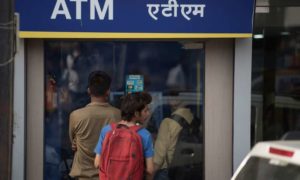New Delhi: More than 65 percent of India’s panchayats have become Unified Payment Interface (UPI)-enabled in less than five months, ThePrint has learnt.
Although the Ministry of Panchayati Raj had set 15 August as the target for starting UPI payment facilities in all 2.62 lakh panchayats (village, district and block), only eight states have completed the process in all panchayats, said two senior ministry officials.
These states are: Madhya Pradesh, Karnataka, Kerala, Sikkim, Tamil Nadu, Tripura, Uttarakhand and Telangana, according to information available with the ministry as on 12 October.
According to a senior official, the ministry wrote to states in May to start UPI payments in all panchayats to “enhance ease of living for citizens”. In consultation with the National Payments Corporation of India (NPCI) — the umbrella organisation for operating retail payments and settlement systems in India, which developed UPI — the ministry came out with a standard operating procedure for a robust UPI-based digital payment system in panchayats, said an official.
“Over 65 percent of panchayats, including 1.69 lakh gram panchayats out of 2.55 lakh (as on 12 October), across the country are now UPI enabled in such a short span,” a senior ministry official told ThePrint. “We were hoping that all panchayats would become UPI-enabled, but there are many states that have not been able to start the work or where the progress is slow.”
States such as Uttar Pradesh, which has the highest number of panchayats in the country (58,610), Andhra Pradesh (13,998 panchayats), and Gujarat (14,901 panchayats) have been able to start the facility in 96 percent of their panchayats. In Maharashtra, which has 28,288 panchayats, over 75 percent of panchayats (20,928) have started UPI-based transactions, ministry officials said.
Read More: SEBI Bans Individual From Securities Markets For 5 Years; Here’s Why
But others such as Haryana, Rajasthan, West Bengal, Odisha, Punjab, Goa, Bihar, Himachal Pradesh, and several northeastern states — Manipur, Meghalaya, Nagaland, Mizoram and Arunachal Pradesh — have not made any significant progress, according to officials.
“In the northeast, some states are unable to do it due to internet connectivity issues. There are some states which have not started the work. We will take up the issue during the review meeting,” a second senior ministry official told ThePrint.
Making panchayati system transparent, boosting revenue
According to ministry officials, the aim of introducing UPI payments is to make revenue collection more transparent in addition to providing people with ease of payment.
In most states, gram panchayats collect property tax, give licences for various commercial activities and collect service or user changes for facilities such as sanitation, they said.
“This (UPI) not only provides rural residents with greater convenience and faster payment processing but also reduces the administrative burden for panchayats in terms of depositing cash into bank accounts. Furthermore, this adoption enhances transparency in the financial records of these panchayats,” the second ministry official said.
States such as Uttar Pradesh, where 96 percent of panchayats (55,401) are UPI-enabled, are witnessing a gradual increase in revenue, ministry officials said.
Pravina Choudhary, deputy director of the Uttar Pradesh government’s Panchayati Raj Department, attributed this to the ease of payment that UPI offers.
“We were able to get over 50 percent of the gram panchayats to start the UPI facility in less than a month. It wasn’t a problem since we started maintaining open-source revenue accounts for panchayat earnings in November last year. We just linked these accounts to UPI. There has been an increase in revenue of gram panchayats, as it has become a lot easier for people to now pay for their services,” Choudhary said.
In Karnataka — one of eight states to state UPI facility in all of its panchayats — there has been a significant increase in property tax collection, according to a senior state government official. Karnataka has a total of 6,217 panchayats.
“We have provided machines for UPI transactions in all our panchayats,” the official said. “In the past few months, we have seen a significant increase in property tax collection, as people don’t have to come to the office to pay it. The increase is also due to the system becoming more transparent. Earlier, the tax collection information was manually entered by field officials. Now, all payments for tax or licences are reflected directly in the system.”





































